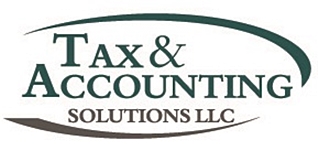 In general, if you use your vehicle in a trade or business, you are allowed to deduct the ordinary and necessary expenses incurred while operating the vehicle. However, any expenses associated with the personal use of the vehicle are not deductible. For purposes of these deductions, “car” includes a passenger vehicle, van, pickup or panel truck.
In general, if you use your vehicle in a trade or business, you are allowed to deduct the ordinary and necessary expenses incurred while operating the vehicle. However, any expenses associated with the personal use of the vehicle are not deductible. For purposes of these deductions, “car” includes a passenger vehicle, van, pickup or panel truck.
Personal vs. business miles
Business use of your car can include traveling from one work location to another work location within your tax home area; visiting customers; attending a business meeting away from the regular workplace; and traveling from home to a temporary workplace if you have one or more regular places of work. The costs of travel between home and a regular place of work, however, are nondeductible commuting expenses.
Standard mileage rate vs. actual cost method
In lieu of proving the actual costs, employees and self-employed individuals may compute the deductible costs for their business use of an auto using a standard mileage rate.* The 2014 standard mileage rate is 56.5 cents per mile. You may not depreciate your car or deduct lease payments if you use the standard mileage rate method.
If you use the actual cost method, you may take deductions for depreciation, lease payments, registration fees, licenses, gas, insurance, oil, repairs, garage rent, tolls, tires and parking fees. Regardless of the method used, if the vehicle is driven for personal as well as business purposes, only expenses or mileage attributable to the percentage of business use are deductible. There are separate considerations involved in leasing a car for business.
Substantiation
If you are using your car for business purposes, proper recordkeeping is critical. The recordkeeping requirements vary depending upon which method you use. If you use the standard mileage rate, you should keep a daily log showing the miles traveled, destination and business purpose.
Recordkeeping under the actual cost method is somewhat more burdensome. You should also keep a mileage log if you use the actual cost method in order to establish business use percentage. In addition, you must keep receipts, invoices and other documentation to verify expenses. Finally, you must be able to prove the original cost of the vehicle and the date it was placed in service for business use in order to claim depreciation.
Vehicle fringe benefits
If an employer allows an employee to use an employer-provided car for personal purposes, this is considered a fringe benefit to the employee. Employers must report their employees’ personal use of the car on their W-2. An employee with an employer-provided car must still keep adequate records to substantiate the business use of the car.
An employee who uses a personal car in the performance of services for his or her employer is entitled to deduct the car expenses if the car is used for the convenience of the employer, and is required as a condition of employment. Any unreimbursed employee expenses attributable to such use are deductible only to the extent that they exceed two percent of the employee’s adjusted gross income (AGI).
(Reproduced with permission from CCH’s Client Letter, published and copyrighted by CCH Incorporated, 2700 Lake Cook Road, Riverwoods, IL 60015.)
* Beginning January 1, 2015, standard mileage rates for the use of a vehicle are:
• 57.5 cents per mile driven for business purposes (24 cents for depreciation)
• 23 cents per mile driven for medical or moving purposes
• 14 cents per mile driven in service of charitable organizations
If you need additional guidance in claiming and substantiating vehicle expenses, please call us to arrange an appointment.
IRS Direct Pay: The most secure way to make your tax payments
Paying electronically is the most convenient and secure way to pay your individual tax bill or estimated tax payment directly from your checking or savings account at no cost to you. The IRS uses the latest encryption technology and doesn’t store your banking information. When you use the IRS Direct Pay option, it puts you in control of paying your tax bill and gives you peace of mind. You determine the payment date. It’s easy and secure, and much quicker than mailing a check or money order. Plus, you’ll receive an immediate confirmation from the IRS.
IRS Direct Pay offers 30-day advance payment scheduling, payment rescheduling or cancellations, and a payment status search. Future plans include an option for e-mailed payment confirmation, a Spanish version and one-time registration with a login and password to allow quick access on return visits.
Here are a few more things you’ll want to know about the service:
- It’s available 24/7.
- To use Direct Pay, you must have a valid SSN. Direct Pay cannot accommodate ITINs.
- To get into the system, you need to verify your identity by entering your SSN, name, address, date of birth, and filing status from a prior return. You can select 2008 through 2013 as the tax year for identity verification. This is helpful if you didn’t have to file a return last year.
- To make a payment, enter the bank routing number and the account number. This bank information is not retained in IRS systems after the payment is made.
After you make a payment, you can use Payment Look Up to do the following:
- Cancel the payment.
- Reschedule the date or change the amount.
- Check the status of a payment.
Taxpayers can pay the following taxes using Direct Pay:
- Installment agreement (20 years back).
- Tax return (20 years back).
- Estimated tax.
- Proposed Tax Assessment (for example: CP 2000 or audit assessment).
- Extension.
- Amended return (20 years back).


